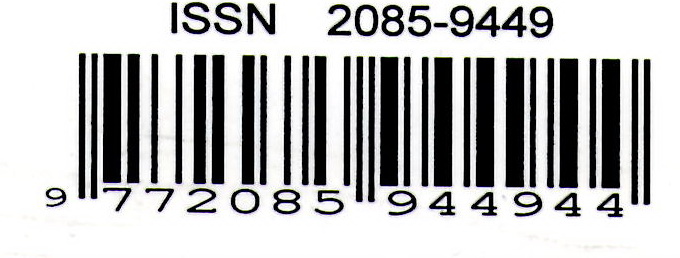Hubungan Kelimpahan Mega Gastropoda dengan Padang Lamun di Desa Selangan Kota Bontang
Abstract
Goesti Mohammad Adam, 2022. Relationship between Mega Gastropod Abundance and Seagrass Beds in Selangan Village, Bontang City (Supervised by Aditya Irawan and Lily Inderia Sari).
Mega Gastropods is one of the aquatic animals that can be seen with the naked eye. The purpose of this study was to determine the relationship between the abundance of Mega Gastropods and seagrass beds in Selangan village, Bontang city. This research was conducted in January 2022. There were 3 types of samples taken during the research, namely Mega Gastropods, Seagrass and Soil Substrate. Soil Substrate Testing was analyzed at the Laboratory of Soil Science, Faculty of Agriculture and for the identification of Mega Gastropods and Seagrass using a guidebook. The parameters used include abundance, diversity, uniformity and dominance. The method used in determining the research location is purposive sampling which there are 2 stations, namely North and South, each of which is divided into 3 quadrant transects, viz Low Surface Water, Middle Surface Water and High Surface Water using the 50 x 50 cm quadrant transect method. Based on the results of research at 2 research stations in the waters of Selangan Village, 14 species were found with a total of 174 individual Mega Gastropod species, at the North Station 164 individual species were found while at the South Station 10 individual Mega Gastropod species were found. The results obtained at the North station at all three quadrant transect points, namely at point MSW had the highest species abundance, namely 65 individuals/m² and the highest relative abundance, namely 80.2% of species Storm pitcher. The results obtained at the South station in the three quadrant transects, namely at the LSW point, had the highest species abundance, namely 4 individuals/m² and had a relative abundance value of 80% of the species Pseudovertagus aluco. Based on the results obtained, the range of diversity index values at all research stations was 0.01 - 1.69. The north station had the highest diversity results when compared to the south station, this value was included in the medium category. The uniformity index values obtained from all stations have a range of 0.01 - 0.75. The north station at the three stations has a more diverse uniformity value, while the south station has a lower uniformity value. Based on the results obtained at the northern station, the dominance index results were obtained with a value range of 0.25 – 0.65, with species Storm pitcher dominating. The results obtained for the dominance index value at the south station have a value range of 0.01 – 0.38, at the three research points with species Pseudovertagus aluco dominating. At the North and South stations, a correlation of 0.93 was obtained, where this value almost reached 1, indicating that the abundance of individual Mega Gastropods and the density of seagrass had a very strong relationship. Based on the results of observations on Seagrass found species Enhalus acoroides.
Keywords
Full Text:
PDFReferences
Arbi. 2009. Gastropoda dan Pelecypoda di Perairan Pelabuhan Gresik, Jawa Timur.
Barus, T. A. 2004. Pengantar Limnologi Studi Tentang Ekosistem Air Daratan. USU Press. Medan.
Brower, JE, Zar JH.(1990). Field and Laboratory Methods for General Ecology.
Third Editon. Dubuque, Lowa: C. Brown Publisher.
English, S.C., Wilkinson, and V. Barker. 1994. Survey manual for tropical marine resources. Australian Institute of Marine Science. Townswile. 367p.
Fachrul, M. F. 2007. Metode Sampling Bioekologi. Jakarta, Bumi Aksara. 198 hlm.
Hartono. 2014. SPSS 16.0 Analisis Data Statistik dan Penelitian. Yogyakarta: Zanava.
Hasnawijaya. 2012. Studi Kesesuaian Lahan Budidaya Ikan Kerapu dalam Karamba Jaring Apung dengan Aplikasi Sistem Informasi.
Krebs, C. J., 1985. Experimental Analysis of Distribution of Abudance. Third edition. Newyork: Haper & Row Publisher.
Magurran, A.E., Pitcher, T.J., & Winfield, I.J. 1982. Fish in larger shoals find food faster. Behavioral Ecology and Sociobiology, 10(2), 149-151.
Nybaken, J.W. 1992. Biologi Laut: Suatu Pendekatan Ekologis. PT. Gramedia; Jakarta.
Odum, E.P. 1993. Dasar-dasar Ekologi Edisi Ketiga. Diterjemahkan dari Fundamental of Ecology oleh T. Samingan. Yogyakarta: Gadjah Mada University Press.
Paillin, J.B. 2009. Asosiasi Inter-Spesies Lamun di Perairan Ketapang Kabupaten Seram Bagian Barat. Jurnal TRITON. 5 (2) : 19-25.
Rangan, J.K., 2010. Inventarisasi Gastropoda di Lantai Hutan Mangrove Desa Rap-rap Kabupaten Minahasa Selatan Sulawesi Utara. UNSRAT, Manado.
Razak, A. 1991. Statistika Bidang Hemmiga, M.A, C.M., Duarte. 2000. Seagrass Ecology. London-United Kingdom (UK): Cambridge Univesity Press.
Rizkya S., S. Rudiyanti, dan M. R. Muskananfola. 2012. Studi Kelimpahan Gastropoda (Lambis Spp.) pada Daerah Makroalga di Pulau Pramuka, Kepulauan Seribu. Journal of Management of Aquatic Resources. 1 (1) : 1-7.
Saripantung., dkk. 2013. Community Structure of Gastropod in Seagrass on Intertidal Area in The Tongkeina Village of Manado City.
Syari, A. I. 2005. Asosiasi Gastropoda di Ekosistem Padang Lamun Perairan Pulau Lepar Provinsi Kepulauan Bangka Belitung. Skripsi. Fakultas Perikanan Dan Ilmu Kelautan. Institut Pertanian Bogor.
Tarumingkeng, R.C. 1994. Dinamika Populasi, Kajian ekologi kuantitatif. Jakarta: Sinar Harapan dan Universitas Kristen Krida Wacana.
Refbacks
- There are currently no refbacks.
Copyright (c) 2023 Jurnal Aquarine
Jurnal Aquarine (JAQ) / ISSN : 2085-9449
Organized by - Mulawarman University
Email : jurnal.aquarine@gmail.com

Jurnal Aquarine (JAQ)is licensed under a Creative Commons Attribution-ShareAlike 4.0 International License.





